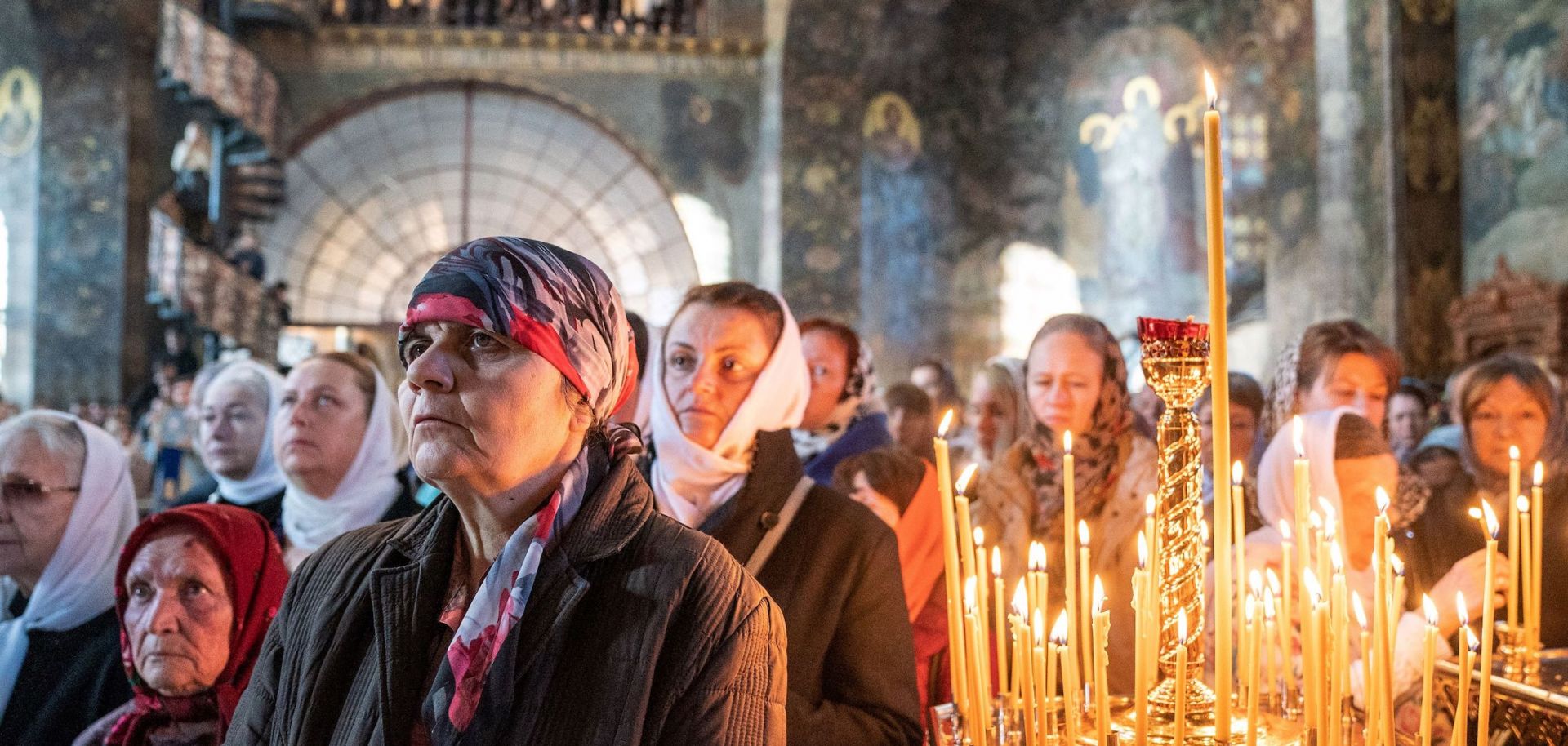GUIDANCE
How Geopolitics Are Driving the Biggest Eastern Orthodox Schism in a Millennium
Oct 19, 2018 | 10:00 GMT

Worshippers attend a service on the Feast of the Intercession of the Virgin Mary in the Kiev-Pechersk Lavra, a monastery and headquarters of the Ukrainian Orthodox Church of Moscow Patriarchy in Kiev on Oct. 14. On Oct. 11, the Istanbul-based Ecumenical Patriarchate agreed to grant the Ukrainian Orthodox Church its independence, a move opposed by Moscow.
(VOLODYMYR SHUVAYEV/AFP/Getty Images)
Highlights
- The granting of autocephaly, or self-governance, to the Orthodox Church of Ukraine and the subsequent break of the Russian Orthodox Church from the Ecumenical Patriarchate of Constantinople mark one of the biggest schisms in the Orthodox world in the past millennium.
- The move by Ukraine toward ecumenical independence from Moscow is part of a larger drive to separate from Russia, and it is likely to lead to greater friction between the two countries.
- The Constantinople decision and the Russian split could lead to bigger divisions within the Eastern Orthodox world, because Moscow will probably try to persuade its Orthodox allies to break away, while other branches could seek autocephaly for themselves.
Subscribe Now
SubscribeAlready have an account?
